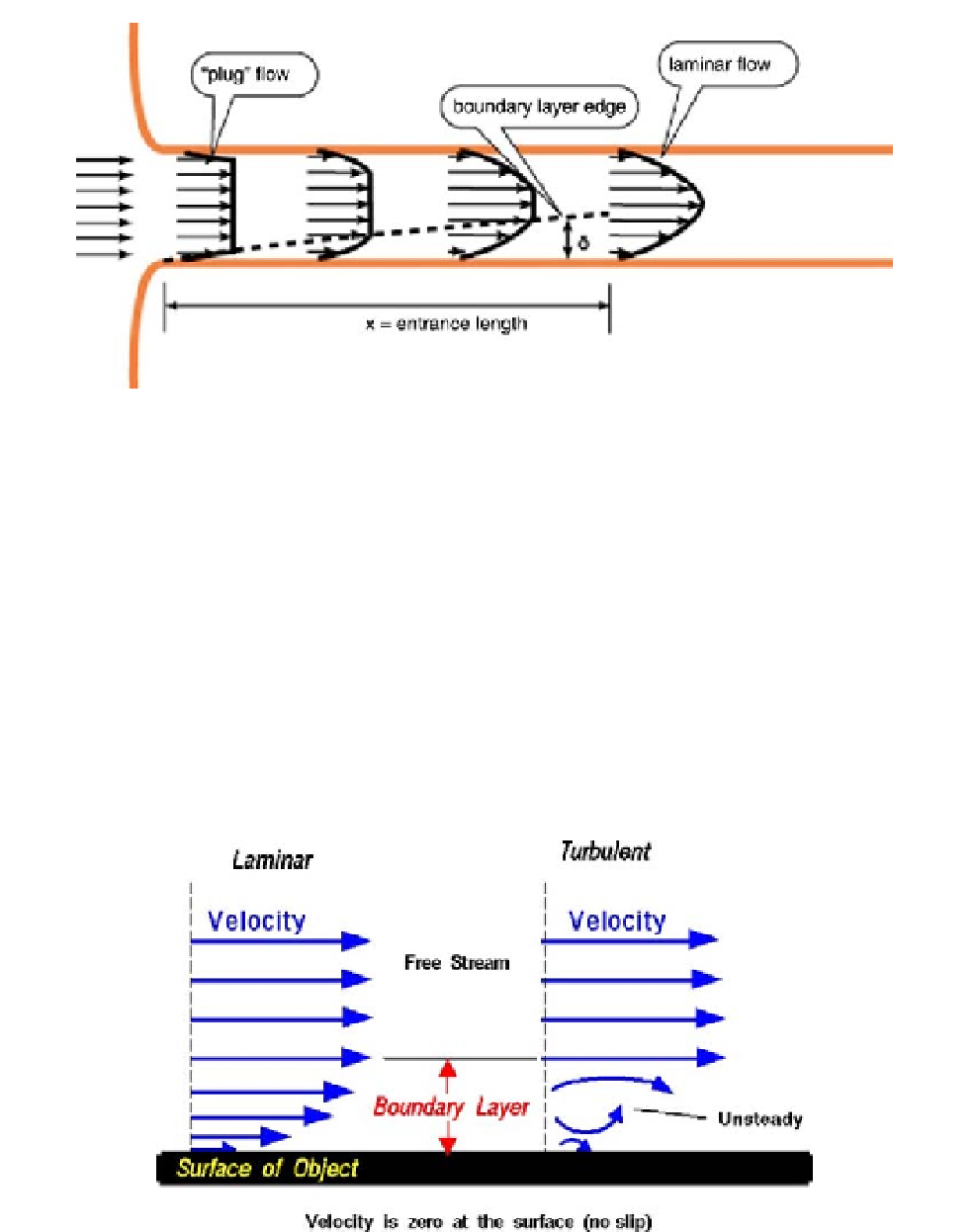Biomedical Engineering Reference
In-Depth Information
FIGURE 14.35
Growth of the laminar boundary layer from a blunt profile on the left toward a more rounded
profile on the right, where the boundary layer becomes fully developed.
the laminar wall shear stress is not huge. However, in turbulent flow, the higher velocities are
convected toward the wall, and the wall shear stress is higher than that of laminar flow. The
turbulent boundary layer grows at a different rate than that for laminar flow, and the fully
developed flow profile is not parabolic but more blunt in shape (Figure 14.36).
Turbulent flow has more energy and therefore a more chaotic flow as compared to the
relatively smooth profile of laminar flow. With the added energy of turbulent flow, there
are fluctuating components of the flow that can be periodically large. Turbulent flow is nor-
mally three-dimensional and time varying, while laminar flow is normally two-dimensional
and time varying only during boundary layer development in the cardiovascular system.
As such, it is possible to hear turbulent flow, and this approach often forms the basis to
determine the prevalence of fluid turbulence in the cardiovascular system.
FIGURE 14.36
Laminar and turbulent boundary layers with laminar version more rounded than turbulent
version. Turbulent version has greater mixing and greater momentum transport.

